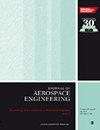用于自主货物运输的模块化可重新配置旋翼机
IF 1.1
4区 工程技术
Q3 ENGINEERING, AEROSPACE
Proceedings of the Institution of Mechanical Engineers Part G-Journal of Aerospace Engineering
Pub Date : 2024-08-30
DOI:10.1177/09544100241272763
引用次数: 0
摘要
传统的空中机动能力开发包括确定一系列要求,然后设计满足这些要求的飞机。一旦设计完成,飞机的整体结构或拓扑结构就是固定的。也就是说,飞机具有某些固定的物理尺寸、旋翼、发动机等的数量和大小。拓扑结构无法改变以完成其原始设计范围之外的任务,而且如果设计用于强大的任务谱系,飞机在执行不需要峰值性能的常规任务时可能会效率低下。本文报告的工作采用了一种不同的方法,即由一组核心组件(机身、旋翼、动力装置等)定义空中机动系统的基本模块。这些模块是利用成熟的现成技术开发的,可与其他模块快速连接,从而组装出性能特征千差万别的不同飞机配置。飞机可在两次任务之间重新配置,以最大限度地满足任务要求。因此,与单个飞机相比,可实现的性能特征范围大大扩展。我们针对自主空中货物运输任务探索了这一概念,其目标是额定有效载荷和航程在 500 磅和 500 海里左右,最大有效载荷可达 3500 磅,航程较短。结果表明,对于额定有效载荷和最大有效载荷之间差异较大且偏向于较小有效载荷的任务范围,使用模块化和可重新配置的空中机动系统可显著降低每磅-公里的运营成本,因为货物交付要求可以更好地与飞行器系统相匹配。本文章由计算机程序翻译,如有差异,请以英文原文为准。
Modular reconfigurable rotorcraft for autonomous cargo delivery
Traditional air mobility capability development consists of defining a set of requirements and subsequently designing an aircraft that satisfies these requirements. Once designed, the overall structure or topology of the aircraft is fixed. That is, the aircraft has certain fixed physical dimensions, number and sizes of rotors, engines, etc. The topology cannot be changed to accomplish missions outside of its original design envelope, and if designed for a robust mission spectrum, the aircraft may be inefficient during routine missions that do not require peak performance. The work reported here takes a different approach where a core set of components (fuselage, rotor, power plant, etc) defines the fundamental modules of the air mobility system. The modules were developed using mature and readily available technologies and designed to be quickly connected to other modules to assemble different aircraft configurations with widely varying performance characteristics. The aircraft can be reconfigured between missions to best satisfy mission requirements. Thus, the envelope of achievable performance characteristics is significantly expanded compared to a single aircraft. This concept is explored for autonomous air cargo delivery missions targeted for nominal payloads and ranges around 500 pounds and 500 nautical miles with maximum payloads up to 3500 pounds across shorter distances. Results indicate that for mission spectrums with large differences between nominal and maximum payloads and skewed towards smaller payloads, the operational cost per lb-km is significantly reduced using a modular and reconfigurable air mobility system since cargo delivery requirements can be better matched to an air vehicle system.
求助全文
通过发布文献求助,成功后即可免费获取论文全文。
去求助
来源期刊

CiteScore
2.40
自引率
18.20%
发文量
212
审稿时长
5.7 months
期刊介绍:
The Journal of Aerospace Engineering is dedicated to the publication of high quality research in all branches of applied sciences and technology dealing with aircraft and spacecraft, and their support systems. "Our authorship is truly international and all efforts are made to ensure that each paper is presented in the best possible way and reaches a wide audience.
"The Editorial Board is composed of recognized experts representing the technical communities of fifteen countries. The Board Members work in close cooperation with the editors, reviewers, and authors to achieve a consistent standard of well written and presented papers."Professor Rodrigo Martinez-Val, Universidad Politécnica de Madrid, Spain
This journal is a member of the Committee on Publication Ethics (COPE).
 求助内容:
求助内容: 应助结果提醒方式:
应助结果提醒方式:


